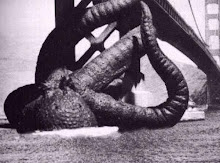
There are 29 locks and dams on the Mississippi River.
There are 14 dams on the Colorado River.
Controlled flow and decapitated biological continuity.
Below is a proposal for a new type of huge infrastructure. A geological infrastructure. It is a large continuous water way through North America.
The water will feed in from Lake Superior, up hill about 1,400 feet. The feed will drain into a great constructed lake which straddles the continental divide in central North West Minnesota, . From there, the lake will drain in contrasting directions through the Red River Valley. One side will flow North toward the Hudson Bay in Northern Canada. The other end of lake will drain down the torso of the United States, from Minnesota, through the Mid-West then terminating in Galveston Bay at the Gulf of Mexico.
One, uninterrupted water passage through the thick middle of North America. There would be large energy producing stations of various kinds along the way, but no dams. The River is large enough to have partial dams. Fish, cargo ships, rafts, and anything else will have a new thoroughfare and it will serve as geological spatial and territorial catalyst for change, detrimental and beneficial.



























